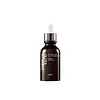What's inside
What's inside
 Key Ingredients
Key Ingredients

 Benefits
Benefits

 Concerns
Concerns

 Ingredients Side-by-side
Ingredients Side-by-side

Sodium Hyaluronate
HumectantCellulose Gum
Emulsion StabilisingGlycerin
HumectantTrehalose
HumectantNiacinamide
SmoothingPropanediol
SolventTranexamic Acid
AstringentButylene Glycol
HumectantArbutin
AntioxidantFerulic Acid
AntimicrobialPhytic Acid
Glycyrrhiza Glabra Root Extract
BleachingChamomilla Recutita Extract
Skin ConditioningVitis Vinifera Seed Extract
Antimicrobial1,2-Hexanediol
Skin ConditioningCaprylyl Glycol
EmollientEthylhexylglycerin
Skin ConditioningWater
Skin ConditioningAscorbic Acid
AntioxidantTromethamine
BufferingDimethicone
EmollientButylene Glycol
HumectantDipropylene Glycol
Humectant3-O-Ethyl Ascorbic Acid
Skin ConditioningBis-Ethoxydiglycol Cyclohexane 1,4-Dicarboxylate
EmollientSqualane
EmollientCaffeine
Skin ConditioningSodium Chloride
MaskingPanthenol
Skin ConditioningAcetyl Glucosamine
Skin ConditioningSodium Hyaluronate
HumectantGluconolactone
Skin ConditioningGlutathione
Pentylene Glycol
Skin ConditioningParfum
MaskingAscorbyl Tetraisopalmitate
AntioxidantXanthan Gum
EmulsifyingSodium Sulfite
PreservativeDisodium EDTA
Gardenia Florida Fruit Extract
Skin ConditioningFerulic Acid
AntimicrobialDextrin
AbsorbentAchillea Millefolium Extract
CleansingTocopherol
AntioxidantArginine
MaskingNiacinamide
SmoothingGlycyrrhiza Glabra Root Extract
BleachingMethyl Trimethicone
Skin ConditioningCarthamus Tinctorius Seed Oil
MaskingWater, Ascorbic Acid, Tromethamine, Dimethicone, Butylene Glycol, Dipropylene Glycol, 3-O-Ethyl Ascorbic Acid, Bis-Ethoxydiglycol Cyclohexane 1,4-Dicarboxylate, Squalane, Caffeine, Sodium Chloride, Panthenol, Acetyl Glucosamine, Sodium Hyaluronate, Gluconolactone, Glutathione, Pentylene Glycol, Parfum, Ascorbyl Tetraisopalmitate, Xanthan Gum, Sodium Sulfite, Disodium EDTA, Gardenia Florida Fruit Extract, Ferulic Acid, Dextrin, Achillea Millefolium Extract, Tocopherol, Arginine, Niacinamide, Glycyrrhiza Glabra Root Extract, Methyl Trimethicone, Carthamus Tinctorius Seed Oil
Ingredients Explained
These ingredients are found in both products.
Ingredients higher up in an ingredient list are typically present in a larger amount.
Butylene Glycol (or BG) is used within cosmetic products for a few different reasons:
Overall, Butylene Glycol is a safe and well-rounded ingredient that works well with other ingredients.
Though this ingredient works well with most skin types, some people with sensitive skin may experience a reaction such as allergic rashes, closed comedones, or itchiness.
Learn more about Butylene GlycolFerulic Acid is a plant based antioxidant. By fighting free-radicals, ferulic acid can help reduce the formation of fine lines and hyperpigmentation.
When used with Vitamin C, Ferulic Acid has shown to prevent Vitamin C from breaking down. In other words, it acts as a stabilizer.
Ferulic Acid is sometimes used to preserve food. Foods containing Ferulic Acid include: oats, rice, eggplant, citrus.
In medicine, Ferulic Acid is being studied for helping with diabetes, Alzheimer's, and cardiovascular diseases.
Learn more about Ferulic AcidGlycyrrhiza Glabra Root Extract is an extract of the roots of Licorice. It has been found to have several benefits such as skin hydrating, conditioning, and soothing.
One component, glabridin, has extra potent antioxidant and soothing properties. It has also been found to block pigmentation from UVB rays in guinea pigs.
Licorice Root also contains a flavonoid. Flavonoids are a natural substance from in plants. Flavonoids also have antioxidant properties.
Another component, glycyrrhizin, has been found to have anti-inflammatory and antimicrobial benefits. This may make licorice root extract effective at treating acne. However, more research is needed to support this.
Liquiritin is one of the flavone compounds found in licorice. It has been found to help lighten skin by preventing tyrosinase from reacting with tyrosine. When the two react, protein is converted to melanin. Melanin is the substance in your body that gives your features pigmentation.
Learn more about Glycyrrhiza Glabra Root ExtractNiacinamide is a multitasking form of vitamin B3 that strengthens the skin barrier, reduces pores and dark spots, regulates oil, and improves signs of aging.
And the best part? It's gentle and well-tolerated by most skin types, including sensitive and reactive skin.
You might have heard of "niacin flush", or the reddening of skin that causes itchiness. Niacinamide has not been found to cause this.
In very rare cases, some individuals may not be able to tolerate niacinamide at all or experience an allergic reaction to it.
If you are experiencing flaking, irritation, and dryness with this ingredient, be sure to double check all your products as this ingredient can be found in all categories of skincare.
When incorporating niacinamide into your routine, look out for concentration amounts. Typically, 5% niacinamide provides benefits such as fading dark spots. However, if you have sensitive skin, it is better to begin with a smaller concentration.
When you apply niacinamide to your skin, your body converts it into nicotinamide adenine dinucleotide (NAD). NAD is an essential coenzyme that is already found in your cells as "fuel" and powers countless biological processes.
In your skin, NAD helps repair cell damage, produce new healthy cells, support collagen production, strengthen the skin barrier, and fight environmental stressors (like UV and pollution).
Our natural NAD levels start to decline with age, leading to slower skin repair, visible aging, and a weaker skin barrier. By providing your skin niacinamide, you're recharging your skin's NAD levels. This leads to stronger, healthier, and younger looking skin.
Another name for vitamin B3 is nicotinamide. This vitamin is water-soluble and our bodies don't store it. We obtain Vitamin B3 from either food or skincare. Meat, fish, wheat, yeast, and leafy greens contain vitamin B3.
The type of niacinamide used in skincare is synthetically created.
Learn more about NiacinamideSodium Hyaluronate is hyaluronic acid's salt form. It is commonly derived from the sodium salt of hyaluronic acid.
Like hyaluronic acid, it is great at holding water and acts as a humectant. This makes it a great skin hydrating ingredient.
Sodium Hyaluronate is naturally occurring in our bodies and is mostly found in eye fluid and joints.
These are some other common types of Hyaluronic Acid:
Learn more about Sodium Hyaluronate